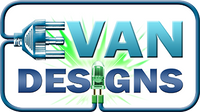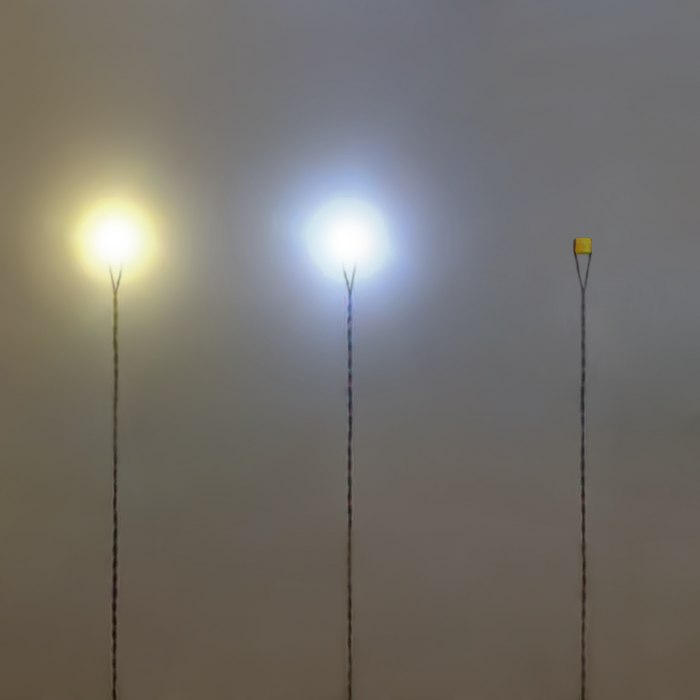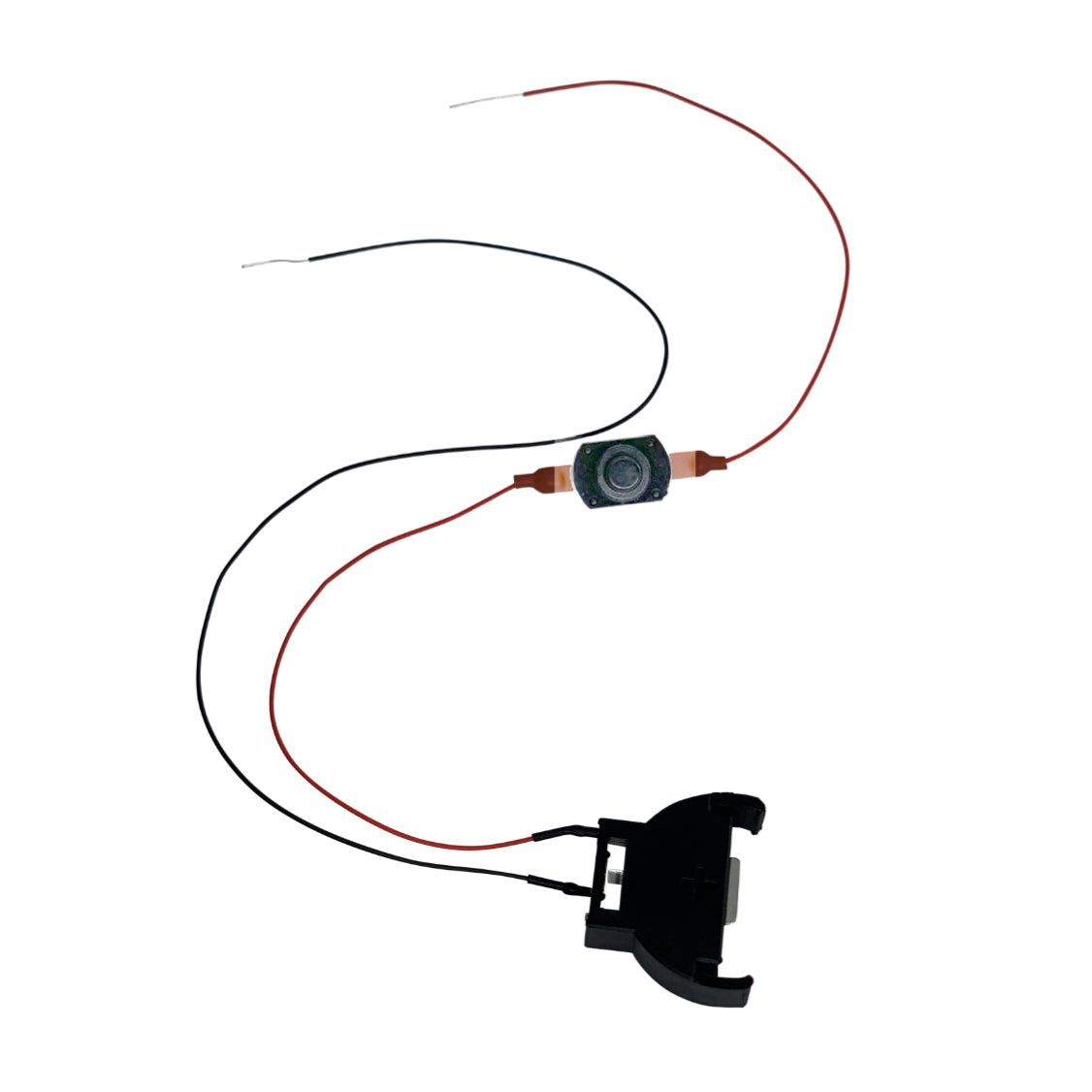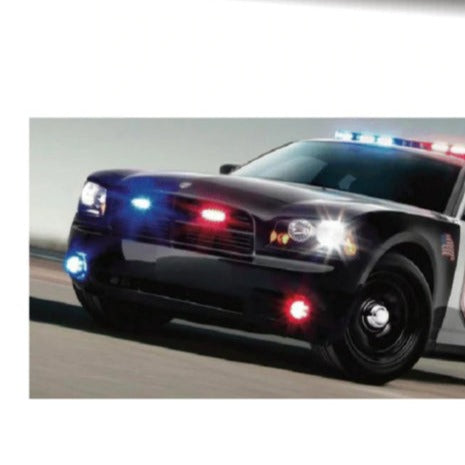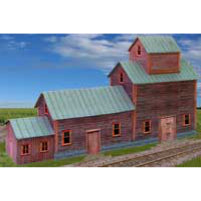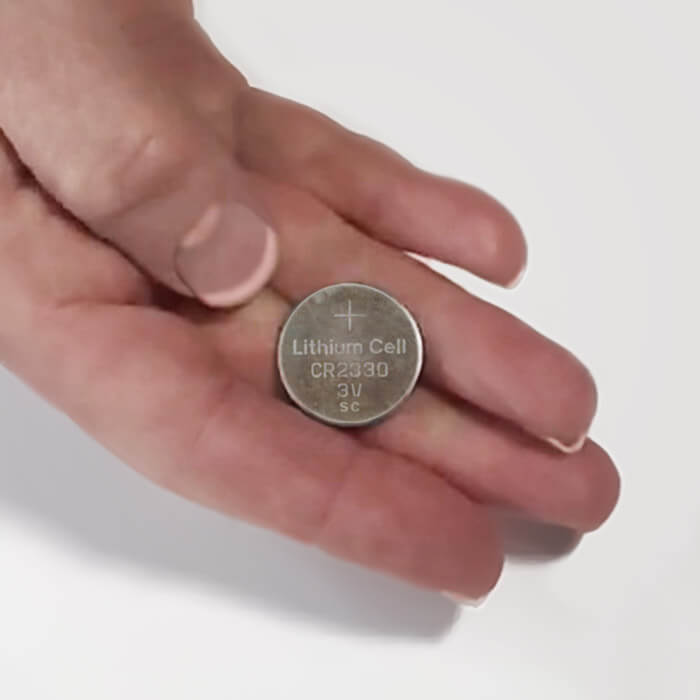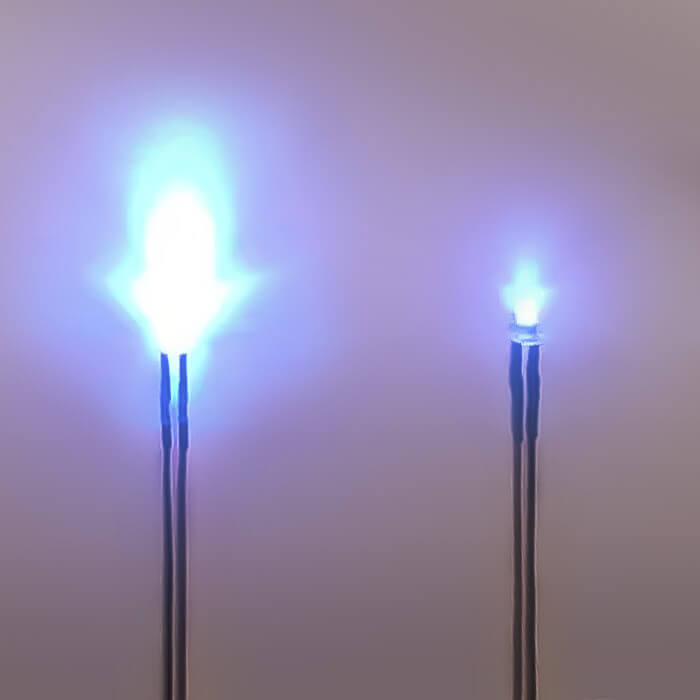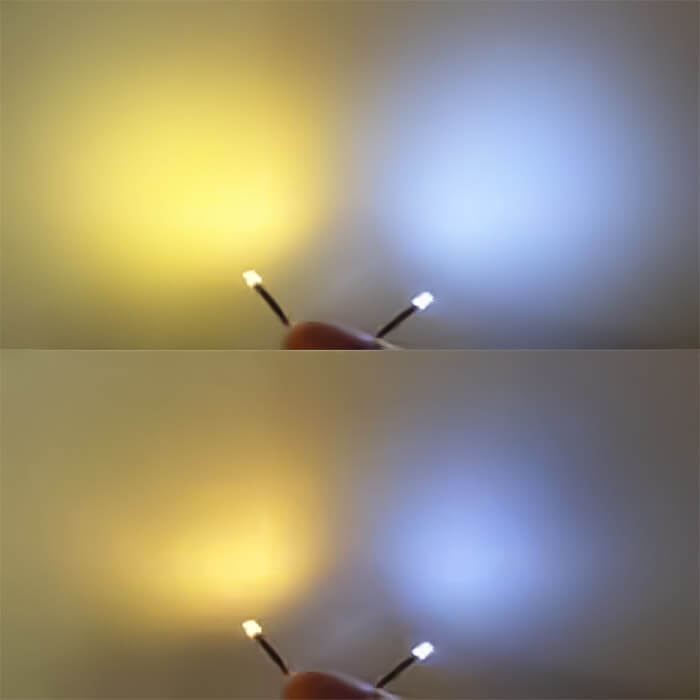Tips and FAQs for Using and Wiring LED Lights
How Do LED Lights Work?
LEDs light by electroluminescence. The color of the light produced depends on the metal used. LEDs are true color and are very efficient in converting energy to light with none of the heat that incandescence relies on. If you’re wondering “How long do LEDs last?” or you need help wiring LED lights, look no further! Continue reading our top tips for using LED lights and help transform your project into a showstopper.
Lighting a project using LEDs can immediately bring your creation to life, but getting started can be a little intimidating, at least at first. If you’re unfamiliar with LEDs, you’re probably wondering, “How do LEDs work?” Luckily, you’re in the right place! Evan Designs has put together answers to the most frequently asked questions to help hobbyists like you install LEDs for models and crafts
Why Light Projects With LEDs?
There are numerous reasons why using and wiring LED lights for your project is the best choice. Below are a few answers to popular questions that will help you understand why.
Do LED Lights Get Hot?
No, LEDs do not get hot. Incandescents are resistance based and only create light as a by-product as they get hot enough to glow. If you're concerned about that — LEDs to the rescue!
You will not melt delicate artwork even if you leave the LEDs on forever. You can even "dress up" your LED with a plastic or paper shade, or paint it, with no worries of damage.
How Long Do LED Lights Last?
Where Do LEDs Fit?
Do LED Lights Burn Out?
LEDs last 25 times longer than incandescent. They draw very little power, so they can run for a long time on a small battery without any issues. There is no need for a bulky wall transformer and a wall plug to light your project.
When LEDs get toward their end of life they fail by dimming over time, rather than an abrupt failure of incandescent bulbs.
Do LEDs Have a Guarantee?
What Power or Battery Do I Use?
Our LEDs draw very little power, only 20 milliamps each.
This means with a 3-volt coin cell type battery like the one in our mini light kit can run up to 10 lights. 6 lights will run approximately 24 hours per coin cell. The coin cell we use is about the size of a nickel.
Related Product: Dollhouse Mini Sized Lighting Package
With a 9-volt battery like a Duracell, you can run 50 LEDs for 4 hours or run 5 lights for 26 hours per battery. You can also run solid and flashing LEDs together with no carryover flicker on the solids.
Related Product: Lighting package for scale models
With a plug-in power supply of 1 Amp, you can run 50 LEDs for 10 years.
Related Product: Regulated 12 Volt DC Output Adapter Transformer
Do LED Lights Get Hot After Long-Term Use?
LED lights never get hot, no matter how long you run them. That is one of the truly great things about LEDs!
You wouldn't touch an incandescent after it runs for a while, and you wouldn’t want that incandescent anywhere near your delicate artwork or finished model either. LEDs are the perfect solution. You can leave your project lit up day and night for years if you want. The LEDs will never get hot or burn out!
How Can I Use 3-Volt Lights or 9-Volt Lights?
Below are some tips for using 3-volt and 9-volt lights to ensure proper operation. Click related product titles to go to the page with that product.
3-Volt
Our 3-volt lights are for 3-volt batteries only. A 9-volt battery is just too strong and will destroy our 3-volt LEDs. Instead, consider using our 3-volt coin cell holder/switch with a coin cell.
Related Products: 3 Volt LEDs, 3 Volt Coin Cell Holder with Switch, AAA battery holder with switch
9-Volt
The 9-volt lights are made with a resistor for use on a 9-volt battery or regulated power supply. They will not be bright with 3-volt coin cells. You can use our battery snap with a switch for the 9-volt lights.
Related Products: Solid LEDs for Battery or Regulated Adapter, 9 Volt Battery Snap & Micro Push-Button Switch For LEDs
AC/DC
If you already have a power supply you use in your project, get our AC/DC lights which have the extra parts to protect for AC power input.
Related Product: Universal Solid LEDs for transformers
How do I Connect My Lights to Power?
What Do Warm White & Cool White LED Lights Look Like?
The warm white is also called "soft white". Warm white is very close to what an incandescent bulb looks like. Warm white is a good choice for most interior rooms like living rooms, bedrooms and dining rooms.
Cool white is sometimes called "daylight". Cool white is a good choice for kitchens and bathrooms or diners. We also suggest using cool white when the light is shining in a window from outside.
What Do the LED Size Numbers Mean?
We offer a variety of LED sizes, and the choice of size can be based on how much room you expect to have in the ceiling, in a lamp, or outside a window. The largest size, 5mm, is great for 1:12 scale, or for when you have a lot of room and need a lot of nice bright light. Depending on where it is used, even 1/4 scale can use 5mm sometimes.
3mm is the middle size. Use 3mm when you need a round, classic bulb shape. It's popular with 1/2 scale, 1/4 scale and 1/12 scale.
1.8mm is our most popular size light for 1/2 scale, 1/4 scale and 1/144th scale. It is the light of choice for many miniaturists! The 1.8mm gives off a nice bright light and does a great job with light coverage.
Can I Reduce the Brightness of My LED Lights?
The easiest way we have found to reduce the brightness is with similar-color paint.
- Acrylic takes down the brightness 50%.
- Enamel takes down the brightness 10-20%.
- A piece of shrink tube on the bulb can cut down side-light. Shrink tube can be applied directly to the bulb since the bulbs never get hot.
Experiment with the amount of paint since you can always remove it and try again.
How Do I Fit My LED into a Tight Space?
How Can I Hide LED Wire in the Ceiling?
After you bend the wire 90 degrees, make a "fake" ceiling out of stiff paper (Bristol board), and punch a hole for the light. Then, glue the "fake" ceiling in place with the wiring headed in the directions you want it to go (back, side, etc.). Or, you can paint the leads and wires white like the ceiling and hide the wires with ceiling textures, like plaster, or use some tissue paper or other material.
Generally, ceilings do not get as close a look as floors do, so you can be more creative with your ceiling coating. Another benefit of gluing to the ceiling is you do not have to put a hole in the floor.
How Should I Drill Holes?
Here are some drill bits we have used for various projects:
| Drill Bit Size | |||
| LED Size | 1.8mm | 3mm | 5mm |
| Only tip of LED showing | 5/64 | 7/64 | 3/16 |
| Whole LED showing | 5/32 | 1/8 | 13/64 |
Also, note that the base of the LED is square, which makes it a little tricky for round holes. When we drill the 5/32 hole, we bend the stalk of the LED 90 degrees and tape it from the backside. This will keep the LED firmly in place.
How Should I Connect Wires for a Stronger Connection?
Try a bit of solder where you have the wires connected: red-to-red and black-to-black. Solder acts like strong glue in getting things to stay put permanently when wiring LED Lights.
Duct-tape is also pretty good for LED connections. If you don't like or don't have solder, use duct tape on the connections
How Do I Make My Wire Connections Even?
When connecting red-to-red and black-to-black, you can cut the wires to even everything up. Then, you will need to expose some newly stripped wire for the connection.
We recommend using a soldering iron to strip wires when wiring LED lights.
How Do I Hide LED Wires?
You could use a small channel molding (1/4") to attach around the base, and then tape the wires and battery underneath. Cut either plexiglass or stiff plastic to slide in the molding.
Or, just glue the battery holder to the bottom of the project and tape the wires in place.
You can put your LED wires under a fake rock, or curl wires up as a hose after painting the wires green. You could also consider putting wires under a bush or potted plant.
Remember to locate the switch in a convenient place. You can disguise the switch with a bit of something that matches the overall theme of your project. The switch can be put in a mushroom cap, a small trash bin, or even under a plant. Check out this switch disguised as a mushroom!
Do the Smaller Lights Bend Like the Others?
How Do I Tell If My Lights are the Right Voltage?
What Color LEDs Can I Get?
We have white (warm or cool), red, orange, yellow, green, blue and purple. We also have a fire kit and haunting kit. Try some other colors for interesting effects!

What If My Light Doesn’t Work?
We will replace all failed or broken lights for free!
Contact us with any issues you may have.
How Do I Wire the New Chip LEDs?
The chip LEDs have a green wire and a red wire. The green wire goes to the black on the coin holder or battery holder, and red still goes to red. You will also need to protect your connections with shrink tube or tape, to prevent a short circuit.
How Does Sanding Down an LED Change the Light?
With Bulb Style LEDs, (1.8mm, 3mm, and 5mm) the light emitting diode is encased in epoxy. The epoxy is globe shaped. This shape provides directional lighting similar to a flashlight. You can sand the globe shaped tip of the LED flat. This will disperse the light over a wider angle. When sanding the light, just sand it until it is flat. Do not go near the metal you can see inside the bulb.
What’s the difference between small, tiny and mini LED lights?
Small, tiny and mini LEDs all offer the same bright glow to light up your space, but they vastly differ in size.
Our pico and Z tiny LED has the thickness of a credit card, and pico is only 1mm wide. Z LED is also thin and only 0.6mm wide. Our mini LEDs include the chip nano. Our small LEDs are 1.8, 3mm, 5mm and Mega. They can be used with larger model trains, O scale or G scale.
Surface mount LEDs from smallest to largest are Z, Pico, Nano, Chip, Mega. Surface mount or chip LEDs are flat and ideal for all Model Train Scales including O, S, HO, N, and G, or dioramas and building lights up to 1/4 scale.
Bulb style LEDs from smallest to largest are 1.8mm, 3mm, 5mm.
Pico, Nano, Chip, 5mm, 3mm or 1.8mm LED lights?
What we are referring to when we mention size is the measurement across the width of the bulb.
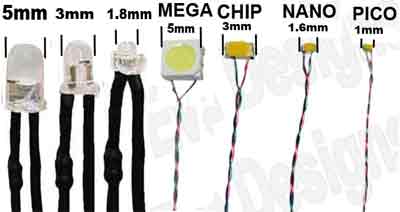
If you are unsure of the size you need, you can try measuring the opening that you plan to fit the bulb into.
- Chip, Nano, Pico and Z LEDs are great for use in action figures, small model cars, planes, and sci fi creations such as space ships.
- 3mm LEDs are great for locomotive headlights, warning beacon lights, train running lights and ditch lights. They can also be used for 1:18 and 1:43 die cast modifications and most RC uses, as well as diorama street lighting. However, in terms of brightness, there isn't too much of a difference between the 3mm and 5mm LEDs.
- 1.8mm LEDs are used in 1:160 and 1:144 scale models. These bulbs are excellent for models where there is not much space to fit a bulb. And, these LEDs are still extremely bright at 400 mcd.
- 5mm and Mega are the largest sized light we offer. We suggest using them for building lighting, passenger car lighting or larger scale train running lights. If the bulb shouldn’t be seen, Mega is a good choice since it throws the light around more than the bulb style. We often use 5mm bulbs with our Fire LED Kit and our Welding LED Kit when they are staged inside of a building.
Why Switch to LEDs?
If you're considering making a switch to LEDs, here are four great benefits:
- LED lights don't heat up like an incandescent light. Therefore, when using an LED, you won't melt the roof of your building or the housing of your train, diorama, water tower or emergency vehicle.
- LEDs are extremely long-lasting, with a run-time of 100,000 hours or 10 years. An incandescent bulb, on the other hand, will last 750 hours or so. Plus, we guarantee our lights for two full years with a free replacement in the event of malfunction.
- Although they're small, LEDs are very bright. Our Mega cool white has 4,700mcd.
- LED’s are shock-resistant and durable. The bulb style light emitting diode is encased in solid epoxy which can be sanded if desired.
Do I need AC LEDs or DC LEDs?
We recommend using universal LEDs under the following conditions:
- If you are running your LEDs directly on your railroad track power
- Hooking them to the DC accessory outlet on your train's power pack
- Running them to your dolls' house transformer power supply or other existing power supply
DC trains switch polarity (whenever you back up) and train transformers have "spikes" or "ripples" as well as surges and interruptions.

There is nothing wrong with this uneven power for most devices, but for LEDs this spells trouble. To protect the lights from this, we have added a full wave bridge rectifier and a filtering capacitor along with the resistor. Even if you have a DC train and you only run your train at 12 volts or less with N Scale Kato power supplies, we still recommend getting universal LEDs.
Running your LEDs on a 9V Battery or Regulated 12V DC wall adapter, get our DC LEDs. These LEDs all come with the correct resistor and connector wire pre-assembled, so they're set to go.
How do I wire the Universal LEDs parallel? Fed by how much power?
Wire lights in parallel. Gather 1 wire form each LED and bring to + then gather the remaining 1 wire from each LED bring to ground.  That's all that is needed! Each LED draws 20 milliamps so 20mA x say 5 LEDs is still only 100 milliamps. The lights already have a resistor rated for 7-19 volt operation so no worries on voltage input. The accessory side or track side of your transformer will work just fine.
That's all that is needed! Each LED draws 20 milliamps so 20mA x say 5 LEDs is still only 100 milliamps. The lights already have a resistor rated for 7-19 volt operation so no worries on voltage input. The accessory side or track side of your transformer will work just fine.
DC and Universal, what's the difference and advantage / disadvantage of each?
Universal LEDs have more protection built in to compensate for AC or DCC which switches polarity 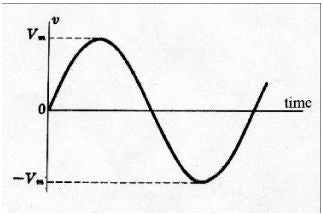
and protection from non-regulated DC power supplies which can look like this  and often deliver more than the listed amount of power. So for example a listed 12V non-regulated adapter can put out as much as 17 volts of power due to the low draw of LEDs. The proprietary Evan Designs circuit covered by shrink tube that you can see in the following picture
and often deliver more than the listed amount of power. So for example a listed 12V non-regulated adapter can put out as much as 17 volts of power due to the low draw of LEDs. The proprietary Evan Designs circuit covered by shrink tube that you can see in the following picture
 has a full wave bridge rectifier for reverse polarity protection and a filtering capacitor to remove voltage spikes/dips. Then, a resistor is added just as in the DC bulbs. Universal LEDs are built for unstable power supplies, and ensure that the power making it to the LED is "smooth" DC power.
has a full wave bridge rectifier for reverse polarity protection and a filtering capacitor to remove voltage spikes/dips. Then, a resistor is added just as in the DC bulbs. Universal LEDs are built for unstable power supplies, and ensure that the power making it to the LED is "smooth" DC power.
If you use a high-quality regulated 12V DC adapter, you will not need any extra protection since you will have "smooth" regulated DC power that the LEDs require. DC LEDs are less costly since they do not have the bridge rectifier and capacitor. DC lights will also run just as long as universal LEDs, provided they have the correct power supply.
If you use an existing train transformer for some or all of your lights, you will need to use universal LEDs.
Can I get more light spread?
The bulb style LEDs we sell are “wide angle” lights, and most have an average of 35 degrees of light spread. If you find that you need more spread, you can sand off the rounded top of the LED without harming the diode. This will increase your light spread to 80 degrees or more. Alternatively, consider our surface mount Z, Pico, Nano, Chip and Mega lights. These bulbs have a much wider viewing angle and are flat, so they can be placed on the ceiling to light a whole room.
Can I fit my LED into a tight space?
Yes, LEDs can be bent up to 90 degrees to perpendicular at the stalk and still light! While you can bend the bulb style LEDs, you may want to consider the flat LEDs, as they are easier to hide and are used in many modern electronic devices.
How do I add or change LEDs in decoder boards?
Refer to the manual that comes with your decoder board. Most positions for added lights are 14 volt, though there are some positions that are 3 volt. Often, within parts made by one company -- and even within a single decoder board -- there are usually at least those two voltages present.
How much power do these lights draw?
Most LEDs only draw 20 milliamps of power, which is less than 1/3 of an incandescent at 65 milliamps of power. You can connect quite a few LEDs to your power source without dropping any power to your model trains.
DC Flashing LEDs, using a single 9 volt battery, how many could I install in a Project like a Police Car?
You can put as many DC flashing LED lights in your project as you need to get a great effect.
We have installed lights in many types of police cars and firetrucks. They're much more real when lit up, and the LEDs are super bright! For modern emergency vehicles, we like to use the DC fast flashers in the light bar and on the vehicle. Headlights sometimes look better with normal speed flashers or our wig-wag circuit.
For the older era police and fire vehicles, we use a normal speed red flasher in the dome light and either solid or flashing headlights and tail lights. If you're placing your car near your model trains and connecting to track power, look into using our Universal Flashers
Our 1000ma 12V adapter has the ability to run 50+ lights with ease. And, when we don't want to use a wall adapter, we simply use a 9V battery. According to Duracell, their alkaline 9 volt batteries are rated 580 milliamp hours.
In our tests with Duracell, we connected 3 flashers to a 9V, and the lights were nice and bright for 40 hours. We used our Strap/Switch Combos that make it really easy. The strap has an end that snaps onto the terminals of any 9V battery and a long tail of red and black wire that can be connected to the lights.
Can these work outdoors?
Yes. These LED’s are the same ones you see around car license plates and in flashlights. The Light Emitting Diode in an LED is completely encased in tough epoxy.
Can I wire these to my track power?
Yes, you can. Our Bridge Rectified Universal LEDs are specifically designed to run on any track power. These lights are "plug and play" pre-assembled. You need to do nothing more to these lights! The bridge rectifier means "constant on" lighting with DC, AC, or DCC track power. Refer to the diagram that came with your locomotive to check where to attach the leads for your particular loco. To light a passenger car, you will need to run the wire down to the track through the "truck". Check back soon for a short article on attaching an LED to power on your rolling stock. In general, the red wire goes to the positive the black wire goes to the negative.
Why Do I need Pre-Assembled DC LEDs ?
An LED bulb can only handle 2 - 3.5 volts of power, depending on the color of the LED. White can handle more voltage than red, for example. If you were to connect an LED bulb straight to a 12 Volt DC power source without a resistor, you would see a very brief bright flash as the LED burns out. We have soldered a color-specific resistor to the LED so that it will work with your 9 or 12 volt DC power source without harming the LED. Our 12 Volt DC LED's can run on anywhere from 6 to 14 Volts and are fully guaranteed to work, with a 2 year Replacement Guarantee, if you run the LED at the correct power.
Why do I need Universal or AC LEDs ?
An LED can only handle 2-3.5 volts of DC power. AC Trains, Digital Command Control Trains and DC trains have power supplies putting out 7-25 volts. We have added a full wave bridge rectifier and a larger ohm value resistor to these LEDs to protect the LED from both the higher forward voltage, and the switching polarity of AC and DCC trains. The great thing about the Bridge Rectifier is that these lights stay lit even when the trains are run in reverse!
You say AC or DC, which is preferred?
The LED’s are made to run on DC power. If you are running AC, DCC or plan to run DC in reverse (backing up) we recommend our 7-19 Volt Universal LEDs.
How many LED's can I wire in parallel?
The LED’s we sell draw 20 milliamps of power. So check your power source. If you have a wall plug power source with 1Amp of power you can run (1000 / 20) or 50 lights in parallel!
Can I mix colors, sizes, flashing and solid in the same model?
Yes! You can mix any color light and size of light (and solid and flashing) in the same application. see a great example of this:
What Can I used LEDs in?
You can use LEDs in Locomotives, passenger cars, buildings, emergency vehicles, model boats, model airplanes, model dioramas, RC Boats, Planes, Helicopters, Trucks. The durability, low heat and extremely long life of LEDs make them by far the best choice for every type of modeler! check out our gallery to see some great photos that our customers have sent us!
Reliability?
One thing about flashers especially that we should emphasize: They need to stay flashing! And the biggest thing is flashers that stop and go to steady after some period of time on power. We don't like to dwell on how much time it has taken to get the ones we carry now. Let's just say a lot of trial and error, and a lot of pitched lots of LEDs. We have test boards everywhere with LEDs connected to various power supplies. Some of them for years now. There are 2 things that go into making LEDs we can guarantee for at least 2 years of use 1)high quality chips 2) perfect soldering technique. We trained the factory we use now ourselves. And financed their purchase of some very high quality Taiwanese ESD irons, sooner than have them use the irons they already had available. Using other LEDs is kind of hit or miss. It's worth it we feel, to pay a little extra for LEDs that don't need to be removed down the road when they fail.
Have Other Questions About Wiring LED Lights?
Reach out to Evan Designs and we can help answer any questions you may have.
Ready to Go? Shop Evan Designs!
After learning all the top tips for using LEDs and getting answers to common questions, you should no longer wonder “How do LEDs work?” We now hope that you can confidently add light to your project to make it stand out. Now that you have the right tools and knowledge for wiring LED lights, it’s time to choose the right ones for your project! With nearly 15 years of experience working with LED lights, you can expect nothing but the best from our products. Purchase today!

